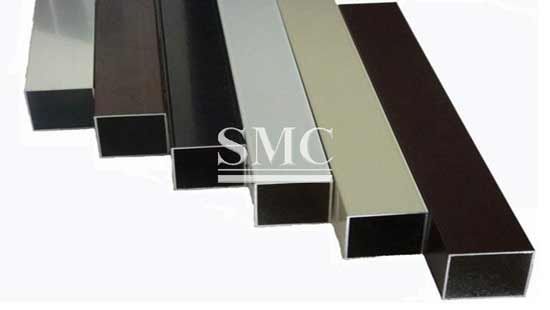Pulsed MIG welding and continuous MIG welding of aluminum alloy have the following characteristics: it has a wide current range; it is beneficial for all-position welding; it can effectively control heat input, and the performance of welded joints is well improved. The principle of pulsed MG welding of aluminum and aluminum alloy is similar to that of pulsed TG welding. The current of pulse MIG welding is also composed of two parts. The first function is called the base current (also called the arc current). The main function is to keep the arc stable and not extinguished and as the main regulating part of the arc energy. The second is called the pulse current, which is used to make the instantaneous current reach and exceed. The values required for the jet transition are such that the wire transitions in a jet state, the two partial currents being supplied by two power supplies, respectively, which are connected in parallel with each other.
The pulsed MIG welding power source is a DC pulse, and the pulsed TlG welding is an AC pulse, and their welding process parameters are basically the same. The basis for selecting the process parameters is the type of welding material, the thickness of the plate, the position of the weld space and the way of the droplet transfer. The adjustment of the pulse parameters, usually the base current remains unchanged, mainly by changing the pulse current, the welding current, that is, the average current. Therefore, the main parameters of pulse welding can be attributed to the pulse frequency, pulse width ratio and welding current pulse MG welding frequency range of 30 ~ 120Hz, the basis for selecting this frequency band is based on the requirements of the droplet transfer form of pulse MG welding. Because pulsed MIG welding is to achieve jet transition, and strive to make at least one droplet change in one pulse, under such conditions, splashing will generally not occur and the arc will be more stable.

In order to obtain good weld formation, the pulse frequency cannot be chosen too high, exceeding 120 Hz. If the pulse frequency is too low, the arc is unstable due to the increase of the arc length, and the short circuit phenomenon is likely to occur between the welding wire and the molten pool. Generally, the pulse frequency of not less than 30 Hz and the pulse energization time are all important to determine the size of the weld. The parameters, generally with the increase of pulse current and the extension of the energization time, the weld penetration and the melting width increase, wherein the pulse current acts more than the pulse energization time, and if other parameters remain unchanged, different pulse currents are used. Different weld penetrations and melt widths can be obtained by matching combinations of pulse energization times. The choice of pulse current should be greater than the critical pulse current to ensure a jet transition.
Generally, the pulse width ratio is 25% to 50%, and the space position is 30% to 40%. If the pulse width ratio is too small, it will affect the stability of the arc; if the pulse width ratio is too large, the welding process is similar to ordinary MG welding, and the characteristics of the pulsed MIG welding are lost. For aluminum alloys with a high tendency to form hot cracks, the pulse width ratio should be selected to be smaller. With the emergence of the “fool” welder, many adjustments to the welding parameters can be omitted. The internal parameters of the welder are already set. The operator has to choose the current according to the thickness of the plate. If necessary, the arc length and the arc penetrating force are generally adjusted to a thickness of 3-6 m. The double-face forming process without single-face welding can be used. Aluminum plates and aluminum tubes with a thickness greater than 6 mm require a bevel, and the bottom weld can also meet the requirements for double-sided forming of single-sided welding. For difficult-to-weld hard aluminum, pulsed MlG welding can improve the welding processability, and the crack resistance and anti-porosity of the welded joint are also improved.
Pulse MIG welding technology is the same as ordinary MG welding. However, the pulsed MG welding can weld the welding quality better than the ordinary MG welding, especially for the aluminum and aluminum alloy thin plate welding parts, the pulse MG welding can obtain much smaller deformation, and some people can weld the angle. Welded 1.5m long, 2mm thick A1-Mg alloy, and the deformation amount is controlled within 1mm.
Guest contributors are welcome at the Alloy Wiki.It is a weekly wiki and guide on alloy information and processing technology, while also about the vast array of opportunities that are present in manufacturing. Our team of writers consists of a Machining Material Supplier / Machinist / Tool and Die Maker, a Biomedical Engineer / Product Development Engineer, a Job Development Coordinator / Adjunct Professor, and a President and CEO of a manufacturing facility.
Link to this article:Key Points of Aluminum Alloy Pulsed MIG Welding
Reprint Statement: If there are no special instructions, all articles on this site are original. Please indicate the source for reprinting:Alloy Wiki,thanks!^^


